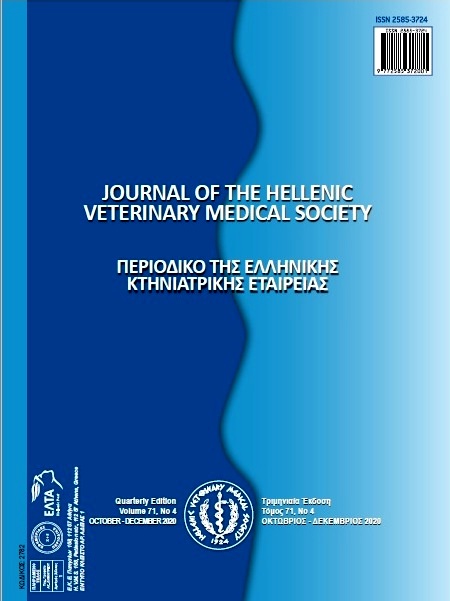Molecular Investigation and Genotyping of Theileria equi and Babesia caballi in Horses in Mus Province, Turkey

Abstract
Equine Piroplasmosis (EP) is a tick-borne disease caused by Theileria equi and Babesia caballi of the phylum Apicomplexa. In this study, 102 blood samples were randomly collected from the horses in Mus province of Turkey. PCR analysis, gene sequences, and phylogenetic analyses were carried out for detecting the presence and genotypic characteristics of species that cause piroplasmosis. Four (3.9%) of the 102 horses that were examined were found to be positive for T. equi, while B. caballi was not detected. Theileria equi isolates that were detected in the sequence analyses were found to be 100% identical to the isolates that were isolated from the horses in Turkey, the United States, and South Africa as well. In the phylogenetic analysis, all of the isolates were found to cluster with T. equi sequences in the genotype A. This study, in which we revealed intraspecies sequence heterogeneity of the parasite using the 18S rRNA gene region, provides important epidemiological data for equine piroplasmosis. However, we think that determining the characterization of genotypes that are common in different parts of our country is extremely important in terms of developing new diagnostic tools and vaccines.
Article Details
- How to Cite
-
OGUZ, B., ÖZDAL, N., DEGER, M., & BICEK, K. (2021). Molecular Investigation and Genotyping of Theileria equi and Babesia caballi in Horses in Mus Province, Turkey. Journal of the Hellenic Veterinary Medical Society, 71(4), 2531–2538. https://doi.org/10.12681/jhvms.25932
- Issue
- Vol. 71 No. 4 (2020)
- Section
- Research Articles

This work is licensed under a Creative Commons Attribution-NonCommercial 4.0 International License.
Authors who publish with this journal agree to the following terms:
· Authors retain copyright and grant the journal right of first publication with the work simultaneously licensed under a Creative Commons Attribution Non-Commercial License that allows others to share the work with an acknowledgement of the work's authorship and initial publication in this journal.
· Authors are able to enter into separate, additional contractual arrangements for the non-exclusive distribution of the journal's published version of the work (e.g. post it to an institutional repository or publish it in a book), with an acknowledgement of its initial publication in this journal.
· Authors are permitted and encouraged to post their work online (preferably in institutional repositories or on their website) prior to and during the submission process, as it can lead to productive exchanges, as well as earlier and greater citation of published work.


